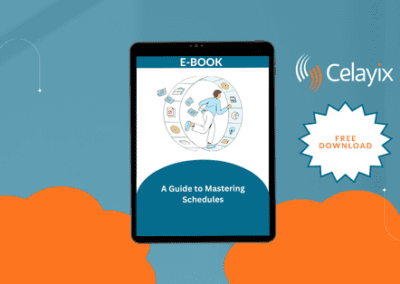
Seasonal demand in business affects several industries. Back-to-School season from August to September is second only to the Holiday Season from late November to the end of December in retail sales. In the United States, Black Friday, the Friday after Thanksgiving, is the first unofficial shopping day of the holiday season. So-called because the increased shopping traffic is thought to result in stores making their first-year profit, sending their accounting statistics from the red to the black.
Event planning seasonal trends are comparable. Certain seasons have been identified as showing clear upward trends. This time frame becomes critical for event planners who want to plan and reserve locations as soon as possible. As a result, this blog will explore seasonal demand patterns in the events planning industry to provide event planners and venue providers with tips on efficiently managing seasonal demand.
What is Seasonal Demand?
Seasonal demand is a time series characterized by regular or predictable demand patterns caused by recurring seasonal occurrences. These cycles might reoccur over days, weeks, months, or quarters, making it difficult for firms to estimate demand precisely.
Why are employers concerned about seasonal demand if it is impossible to predict? This is because employers frequently seek to forecast seasonal demand to discover variations in customer requirements and areas of concern for their firm. Seasonal demand forecasting is critical, particularly in the events industry, where the market is continuously changing, and competition is increasing. Our next point will look at recognizing general trends that occur in event planning.
General Seasonal Demand Trends in Event Planning
Most event planners already have an idea of what the peak seasons are. But if you’re new to this industry, this section is for you!
SPRING in demand
As winter gives way to spring, event planning becomes a little hectic. Beginning in April, we observed a slight rise in planning traffic. The spring season means a SPRING demand for event planners and large venues. This increase is due in part to upcoming high school and college graduations. Friends and family are planning huge and small graduation celebrations to coincide with commencement dates from late April to June.

Summer family reunions are also being planned at this time. During this time, outdoor venues and resorts may fill available summer dates.
Back to Work…for now!
While summer is a busy season for many event planners, incoming inquiries decrease slightly while people are away at events or on vacation. However, event planning sees a minor increase in September and October once the summer season is finished.
This period can be referred to as the Holiday Planning Season. Children have returned to school, parents have returned to work, and many businesses have begun to plan for year-end celebrations. Requests for holiday party planning stream in over these two months, giving excitement to event planners looking to fill their calendars for the end of the year.
No Time to Rest
When the holiday season begins, the amount of planning reduces, and event planners focus on producing unique holiday events. But, even before the last holiday party is cleaned away, the first requests of the New Year begin to stream in.
The month of January is the busiest for event planning. The New Year brings new corporate budgets, resolutions, and newly engaged couples planning their weddings. There are several reasons to arrange an event in the future year.
The meeting, wedding, and party requests quadrupled in January compared to the previous month.
Likely Seasonal Demand Trends for 2022 and after
Over the previous few years, events have changed dramatically. Social issues significantly affect event seasonal demands from the pandemic’s residual impacts on enterprises to a significant shift in society’s attitudes around employment.
In-person events are returning, but with some uncertainty.
The 2022 Global Meetings and Events Forecast, released by American Express Meetings & Events, a component of AMEX Global Business Travel, covers the meetings and event trends expected for the future year. According to the estimate, in-person events are scheduled to return in 2022: “67% of respondents anticipate in-person meeting levels will recover to pre-pandemic levels within one to two years.”

According to the research, the large number of event professionals who have raised their event budget for 2022 further supports in-person event growth.
Because of the anticipated comeback of in-person events, several event locations have limited or no availability for future events in 2022. Event locations, employees, and other essential services are in great demand. It may be more challenging to get the vital vendors and services.
The Great Resignation will affect meetings and events.
Workers have been leaving their jobs in significant numbers across a wide range of industries in what has become known as The Great Resignation. One of the key themes discussed at the International Confex 2021 conference was the shift in expectations of modern employees with The Great Resignation: it isn’t just about the money anymore. Workers everywhere have higher job expectations and seek firms that value personal well-being, mental health, and an excellent work-life balance.
As in many other industries, finding and keeping talent will influence events in 2022. Understaffing is one of the most pressing issues confronting event planners. Staffing shortages in the business have left many planners feeling burned out, with some ready to switch careers entirely.
Planners reported feeling stretched too thin in a 2021 survey with Visier, a people analytics company, and that they were not receiving the personal or professional support they needed from their superiors. Some even expressed disappointment with their organization’s unwillingness to recognize employee sacrifices. Event planners everywhere have been feeling the strain of job overload, with one-third confessing to burnout.

We will see a solidified focus on health and safety.
We’ve seen a new emphasis on hygiene emerge in recent years, as well as the capacity to remove oneself during gatherings socially. Touchless technology and digital event communication have both played essential roles in making in-person gatherings safer, and 2022 will indicate that these processes may be here to stay. Event safety is no longer an option but rather a need.
Integration of more augmented/virtual reality.
Virtual trends have been on the rise in recent years. Recent data, however, suggest that augmented reality experiences are becoming a popular event trend, as they are a more inexpensive and accessible choice for many event producers.
Hybrid events continue, and virtual events become more frequent.

The popularity of hybrid and virtual events continues to rise in the events sector. Virtual and hybrid events that include virtual and in-person components are more ecologically friendly and sustainable than in-person events. They may also provide planners with the opportunity to reach a larger audience.
Many planners who have adopted virtual events have noticed an increase in their ROI due to lower overhead expenditures. Indeed, 84% of planners regarded virtual events as much less expensive than in-person equivalents, and 93% of event professionals told Bizzabo that they want to invest in virtual events soon.
There is an increased demand for eco-friendly, sustainable events.
Merchandisers, dealers, and suppliers worldwide commit to more environmentally responsible business methods and events. According to Mark Bannister, the Technical and Operations Director for COP26, there is widespread support for a sustainable transformation in the events business. Bannister’s central purpose is to produce a carbon-neutral event by utilizing a circular economy, sourcing responsibly, creating social value, and lowering an event’s carbon impact.
Managing Seasonal Demand Changes as an Event Planner
Recognizing seasonal demand variations is insufficient for event planning. Businesses must search for methods to improve their services, get ahead in planning, and outperform their competition. So, how do you stay up with the changes? Here are a few ways to align your offers with the seasons.

- Rethink your budget to account for the resurgence of in-person events. Reserve venues and event services as soon as possible.
- Avoid burnout for yourself and your employees. Hire enough people during high seasons. Spend your off-season developing solid relationships.
- Every event should be risk-assessed—plan for safety and budget for it. Have a backup plan in place for significant incidents.
- Find your planning style’s ideal augmented reality experience and keep current on developing event technology.
- Examine the ROI of your virtual event. With the new software, you can host better virtual and hybrid events in 2022.
- Reduce. Reuse. Recycle. Create a circular economy by using things that can be reused or recycled after an event. Add social value by donating or providing free courses and lectures to community members.
- Use staff scheduling software like Celayix to automate time-consuming processes like employee scheduling.
Managing Seasonal Demand Changes as a Venue Provider.
Venue providers often work side-by-side with event planners. They must keep in mind that the seasonal demand changes for event planning go hand-in-hand with their services. Nonetheless, there are a couple of things venue providers can do separately to ensure they are effectively managing seasonal demand.

- Prepare for a busy year. Examine your booking and cancellation rules to ensure that your calendar is entirely yet appropriately filled. Determine how much flexibility you are willing to offer.
- Give potential workers compelling reasons to join your company and even more compelling reasons to stay. Treat people well, pay enough remuneration, provide benefits, and foster a positive employee culture.
- Provide secure and sanitary event facilities, flexible booking regulations, and show planners your methods.
- Include augmented reality in your marketing strategy. Make a video tour of your facility to attract event planners and experts.
- Incorporate hybrid event marketing into your venue’s sales plan for 2022.
- Integrate or revitalize sustainability programmes.
Final Thoughts
Throughout the year, the event industry will likely see different kinds of events: Fundraisers, Camps, Reunions, Classes, Tournaments, Festivals, and Celebrations. Event planners and venue providers must use seasonal demand forecasting to optimize their competitiveness and plan.
One of the best ways to do this is by using software that helps create forecasts and help you decide. Managing seasonal demand can be straightforward if you have scheduling software such as Celayix that would help create the perfect schedule. You wouldn’t ever have to worry about being understaffed or overstaffed for any shift. With marketing and communication much easier thanks to the latest technology, the events venue industry must take advantage of it to manage the increasing demand. In case you’d like to know more about managing venue staff, read our blogs on the essential skills to have for event success.




